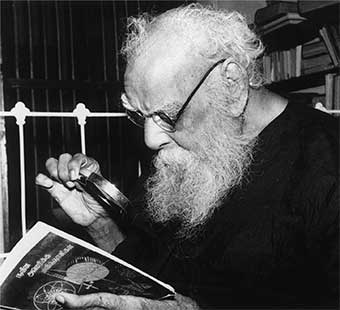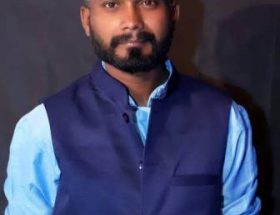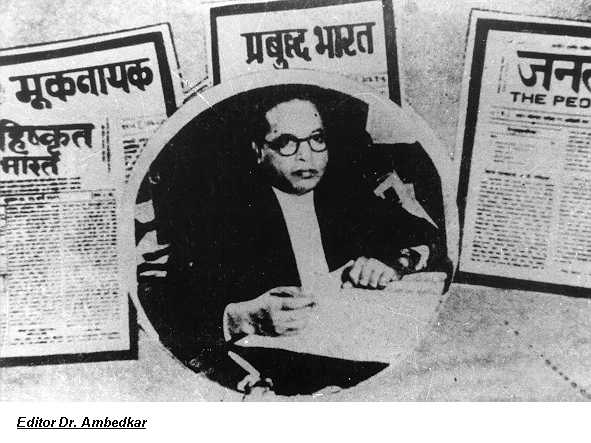Jayabrata Sarkar
The ‘stirrings of protest against untouchability and social oppression’ in the late 19th century and early 20th century acquired a more distinguishable region-specific character to the crystallization of a broader socio-political struggle. Two distinct types of low caste struggle captured the ideological and political imagination of the poor during this period —The Satya Shodhak Samaj (1873) in Western India and the Self-Respect Association formed by Periyar in South India. The Satya Shodhak Samaj founded by Jyotirao Phule fought against ignorance, exploitation and slavery that were based on religious and financial exploitation. Natural rights of the deprived was upheld to re-establish human values, economic independence, social justice, humanity, intellectuality and independence of women. The Satya Shodhak Samaj was a powerful statement against caste oppression and held out a source of inspiration for other anti-caste movements.

On the other hand, the social reform movement in South India took two simultaneous modes of socio-political struggle — the Justice Party formed in 1916, which by the second decade of the 20th century had successfully launched a political movement to challenge the dominance of Brahmin elites in colonial administration and thereby its caste hegemony in the public sphere on a call for social equality. However, the leadership of the Justice Party was composed of landowning merchant class primarily from the middle and upper-middle class communities such as the Vellala, Chettiar, Naidu caste groups who had higher ritual status compared to other non-Brahmin caste groups. In a sense the Party lacked the appeal of mass support. It was Periyar’s Self Respect Association (1926) that took the anti/non-Brahmin Dravidian agenda to the masses consisting of ‘students, new urban lower middle class,’ ‘small landholders, non-brahmin backward castes, labourers and untouchables’ such as the Nadars, Agamudaiyar, Isai Vellalar, Senguthai, Paraiyan, Pallar etc. The Association ‘adopted the personality of Periyar’, the cultural advocate of anti-brahminism and his configured ideological position of ‘Shudra primacy’ that would outline the contours of political struggle of the Dravidian political parties in the post-independence period. Periyar’s alternative conception of social identity had ‘an emancipatory potential’, that is, liberation from a socially inferior position by advocating defiance to dominant modes of social inequality. It sought to upturn social discrimination that was designed not only to launch a scathing attack on brahminical dominance in religion, economic and political affairs that would emancipate the ‘Dravidian non-Brahmin’ but to substantiate the struggle by focussing on the liberation of women from social inequality and exploitation that originated within an oppressive patriarchal structure that defined family life in a conservative south Indian society.
I
Periyar’s radical ideas to emancipate women offers an altogether different trajectory to the conception of social justice of nationalist Congress that initially germinated within the matrix of colonial modernity, and subsequently, its extant form that defined the paradigm of socio-political struggle that Congress would undertake to achieve political independence. These two interrelated aspects of social justice need to be explained.
Within the restricted sphere of ‘colonial modernity’ different social groups, notably, educated upper class/caste groups sought to define justice in terms of discrimination that they faced primarily with respect to access to jobs and political representation under the colonial regime. Within the larger national milieu the social character of the upper class, often westernized political elites, acquiring leadership positions in the ‘nationalist’ Congress Party, outlined the sociological base of the concept of social justice in terms of fair treatment from colonial rulers. This notion of social justice remained primarily middle class in nature expressed in terms of ‘collaboration and competition’. It was ‘inward looking and did not look beyond its own narrow interests’, more clearly, the vested interests of the upper class natives. The substantive aspect of justice, that is, the deeper concerns relating to the welfare of the lower caste groups and the deprived, especially women facing multiple levels of discrimination and exploitation in a hegemonic social order could be ‘supported as an idea during nationalist struggle’, but definitely not crystallized into a political concept to avoid ‘fragmenting impact on national solidarity.’¹
More generally speaking the nationalist movement while approving of imitating and incorporating the material culture of the West argued that adopting the West in aspects which were spiritual or anything other than the material sphere of western civilization would threaten the ‘self-identity of the national culture’ itself. In this regard the nationalist upper caste elite resolved the women’s question by reworking and reaffirming the pre-existing patriarchal system. As an extension of this position they located home as the site to retain the inner spirituality of indigenous life and women as the agent responsible for that. It was advocated that women could meet this responsibility of preserving the spiritual core of the national culture through chastity, self-sacrifice, submission, devotion, kindness, patience and the labour of love. Only within this the nationalist movement attempted all its reforms related to women. As long as women demonstrated these so-called feminine or spiritual qualities they would go to school, travel in public conveyance, watch public entertainment programmes and in time even take up employment outside home.²
To achieve the goal of self-respect, Periyar left the Congress in 1925 and founded the ‘Suyamarithai Iyyakam’ Self Respect Association in 1926 underlining a social agenda to transform the pathetic state of women in South India. Social justice was to be realized first in the family where the oppressive hierarchy had to be overturned. Further, self-respect was as valuable as life itself. To a human being it is the protection of his/her ‘suyamaridai’ (self-respect) which was his/her birthright and not ‘swaraj’ (political freedom). Hence political freedom would not be fruitful without individual self-respect. Only then would the concept of ‘self-respect’ achieve social and political value in society.
Addressing the South Indian Reform Conference in 1928, Periyar said: ‘[…] I have gradually lost faith in social reform. For one who believes in radical change, self-respect, equality and progress the alternative [to the present situation] is not merely reform, but radical reconstructive work which will destroy the traditional ancient structures. In this regard Periyar was not content with taking up such conventional themes of women’s emancipation that restricted itself to widow–remarriage and women’s education, which, even if successful, did not undermine the existing structure of patriarchy. Infact, on the question of women’s education Periyar noted: ‘The quality of education, with its curriculum of cooking, music, tailoring etc., imparted to women, is to make them efficient wives and mothers.’ Thus women’s education has been an advertisement to acquire a ‘qualified husband’. He instead questioned the foundational ideas of patriarchy, such as, the monogamous family and the norms of chastity prescribed for and enforced upon women.³
In order to achieve this objective Periyar engaged in what may be termed as pedagogical praxis, a reflection and action directed at brahminic-patriarchal structures to be transformed by opening multiple sites of resistance embodied by the placement of radical ideas with which women could engage, practice and apply towards a new mental and imaginative freedom that it beckoned.
II
It is within an ensemble of ideas that interrogated the dominant ideas of patriarchy—chastity, monogamous family, classical Tamil texts, Tamil language and advocacy of legislations to legalize divorce, forbid child marriages, ensure widow remarriages and support an ideal ‘self-respect marriage’ to be practiced by Association members that he put forth a contentious idea of birth control. Birth control measure was seen by Periyar as a master stratagem that would be seen as an act of deliverance, which would in its effectiveness singularly uplift women from oppressive domesticity that patriarchy imposed and pose a frontal attack on the notion of male succession to the ownership of property. Women would have control over their reproductive capacities being perceived as a matter of right and freedom of choice rather than a hegemonic social obligation.
Periyar’s idea of birth control needs to be contextualized within the early birth control debates in Tamil Nadu. Anandhi states that the Neo-Malthusians of Madras (1890-1930) who were almost all upper class, upper caste men were worried about the ‘excessive reproduction of the lower orders’, and therefore concluded that excessive fertility was a cause of poverty. They saw women as “reproductive bodies” and in this regard their views coincided with those who advocated opposition to Neo-Malthusianism, perceiving women as pure “reproductive bodies” — the Hindu Nationalists and the Gandhians. The Hindu Nationalists opposed birth control because the control of women’s sexuality required by the endogamic caste system negated women’s freedom to control their own reproduction. Contraception allowed more sexual freedom, and this was dangerous to the caste system. The Gandhians, from the 1920s onwards, and Gandhi himself in his private and public life were concerned about the increase of population. Earlier in his life Gandhi had defended the right of Neo-Malthusians who preached contraception to express their views in the Vegetarian Society of London of which he was secretary while studying law. He himself, however, believed in celibacy (brahmacharya). After having four children, he imposed celibacy on himself and his wife. Anandhi argues that Gandhi’s position is consistent with the view of women as pure ‘reproductive bodies’. In 1932, in an interview to Margaret Sanger, a well-known American birth control activist, Gandhi still opposed ‘artificial’ birth control.⁴
Periyar was explicitly anti-caste arguing against Hindu religious notions of purity of blood and consequent control over women’s sexuality. Periyar argues that once a woman was made the ‘guardian of man’s property’, she herself became his property to produce heir for the family. Women lost their right [even] to worship their ‘bigamous’ gods but only their husbands. In the context of Periyar’s view that private property with its need to have inheritors gave rise to women’s subjection within family, his advocacy of birth control assumes significance. In 1936, the Self-Respect Movement brought out a volume containing 35 translated articles on the necessity of contraception with a foreword by Periyar. Arguing that women should have the right to decide whether to have children or not, he differentiated his position from the other advocates of birth control. By focussing attention on women’s choice, Periyar said:
‘There is a fundamental difference between our insistence on birth control and other’s notion of birth-control. .. (Others) have only thought about family, women’s health, energy of the children, maintenance of family property and the nation’s economy through means of contraception. But we (speaking on behalf of the Association) say contraception is essential for women to be free and autonomous’.
Periyar initially sought to dispel the ‘blind belief’ that ‘children were born due to grace of god’. […] He posed a pervasive argument in which he stated that considering that children were ‘ under nourished, poorly clothed and illiterate […] due to the ‘low income of their parents’ (was not) god responsible to ‘provide a cow to give them milk? […] land to grow food to feed them and enough means to bring them up with sufficient clothing, proper education […] If god (granted) children (but) no means for their proper growth (was) he not an irresponsible one?
Having set a background context Periyar, even suggested that ‘[…] women stopped conceiving forthwith. Begetting a number of children (affected) not only the women but also their husbands adversely. Besides, (women) lose (their) lustre and stamina with repeated child-bearing and fell an easy prey to diseases and premature death’. However, Periyar clarified that birth control (did) not aim at preventing the birth of children altogether; it only aimed at limiting the births. That (was) the reason that he insisted on women adopting contraceptives to safe-guard their rights. Second, excessive number of children not only affected the health of the woman but also the family. Periyar speaking in the ‘voice of a harassed’ husband said:
‘Had I been single I could have braved the situation boldly but having now four to five children to feed I could do nothing but bow to others”. In a similar vein the wife would bemoan: “I couldn’t bear with these trials any longer. Had I been all by myself I could have by this time quit my family and committed suicide by plunging into a river or a tank. But what could I do now having children of my own to take care of? Can I leave them orphans after my departure?’
‘Such sporadic emotional wailings bear witness to the fact that excess children (were) shackles to one’s free-will and free action. Whereas a man has to forfeit all his rights and self-respect to eke out his livelihood how (could) he dream of leading an independent life overburdened with a cluster of children hanging around him? As such, conceiving, bearing, and begetting children deprived a woman of her own independence and set her husbands’ freedom at naught’.
At this juncture Periyar wished that an ‘Institution for Contraception’ be established and pamphlets, booklets and periodicals be published for its propagation. He emphasised the urgency of birth control propaganda as more important than anti-liquor and leprosy eradication campaigns. For the propagations of birth control methods, he demanded that the Government must set up an institution or clinics; and during Self Respect Marriages, he requested the couples not to have any child for a minimum of five years from the day of marriage. On the need to adopt birth control legislations Periyar faced opposition from Madras Legislative Council members. In this regard Periyar criticized council member Muthulakshmi Reddi, an eminent medical practitioner, who took up women’s activities, who campaigned against the ‘devadasi system’ since it stood in the way of women being chaste wives but could not perceive the link between contraception and women’s freedom. She could only advocate and that to rather reluctantly the Gandhian ideal of self-control/celibacy/brahmacharya to control excess birth. Periyar stated that ‘Had there been any obligation on the part of the government that it ought to take care of all the children born in this country, the Minister might, perhaps, not raise her voice against contraception. As the population increase is not the concern of the government, no one is going to worry about the fate of the children who are born as liability to others and not to the State.’ Further he stated that it was ‘[…] highly deplorable that a Minister for Health and a qualified doctor like Mrs. Muthulakshmi should oppose propagation of contraception. The public should ignore such persons and follow their own ways and means and adopt contraception for their own benefit. Periyar’s sense of disappointment at Muthulakshmi’s stand was justified since the implications of contraception were being realized gradually. Periyar suggested that in newspaper dailies ‘ […] brahmin bigwigs like Sir C.P. Sivaswamy Iyer, Justice Ramesh and other Brahmin bureaucrats (were talking and writing) about ‘contraception.’ In the public sphere Periyar engaged in a debate with C. Rajagopalachariar, the President of the Tamil Nadu Congress, on the contentious issue of birth control measures that he advocated for women. In response to Rajaji’s stand against birth control, Periyar explained that he (Rajaji) was against this since he was of the Vedic Brahmin community that (was) staunchly engrossed in the Manu Dharma. Periyar argued persuasively that limiting births […] would limit diseases and death from many and therefore leave Brahmin priests without a job of doing ceremonies for the sick and funerals. In an article written in Viduthalai he stated: ‘If people like Rajaji discover new islands, make the forests habitable, do propaganda for the birth of more and more children and have farms for the upbringing of children, we may be in a position to understand them.’
Periyar’s forcefully advocated birth control measures in the post independent India. In a 1959 article in Viduthalai he stated: ‘[…] if birth control (was) not practiced and people (were) allowed to have any number of children, the result (would) be the multiplication of castes among the “Sudras”, like washermen, barbers, pot-makers, kuravas or gypsies, hunters, fishermen, farmers [sic], toddy tappers, padayachies, pillars, cobblers, pariahs, and a thousand others and a limitless increase in population. The increase in population would force the ‘Sudras’ to preserve themselves from starvation by standing with folded hands before lazy fellows and calling them ‘swami’, ‘master’ and ‘landlord’. What good result can we expect if birth control is not adopted? ⁵
References
1. Francine Frankel, M.S.A.Rao (Eds.) (1990): Dominance and State Power in Modern India: Decline of a Social Order, OUP, New Delhi, p. 488; Stuart Corbridge and John Hariss (2000): Reinventing India, UK, Polity Press, pp. 212-3; Braj Ranjan Mani, (2005), Debrahmanizing History: History, Dominance and Resistance in Indian Society, New Delhi, Manohar, p. 293; Christophe Jaffrelot (2003): India’s Silent Revolution: The Rise of Lower Castes in North India, New Delhi, Permanent Black, pp.153-4; Ishita Banerjee-Dube (2010): Oxford in India Readings: Themes in Indian Politics Caste in India, New Delhi, OUP, p.218; Pauline Kolenda (1978), Caste in Contemporary India: Beyond Organic Solidarity, California, Benjamin/Cummings Publishing Company Inc. pp. 119-120; Oliver Mendelsohn and Upendra Baxi (Eds.) (1994): Rights of the Subordinated People, New Delhi, OUP, pp. 68-72; Rajeev Bhargava (Ed) (2008): Politics and Ethics of the Indian Constitution, New Delhi, OUP, pp. 234-5.
2. Anandhi. S. (1991):”Women’s Question in the Dravidian Movement” (1925-1948), Social Scientist, 19, 5/6, May-June, pp. 24-41.
3. Kudi Arasu, 26 November 1928; 10 January 1948 and 21 September 1946.
4. Mary. E. John and Janaki Nair (Eds.) (1998): A Question of Silence? The Sexual Economies of Modern India, New Delhi, Kali for Women, p. 159; Mohan Rao (1994): “An Imagined Reality: Malthusianism, Neo-Malthusianism and Population Myth”, Economic and Political Weekly, 5, 29, 29 January, p. PE 45-6, 47; “The way Periyar E.V. Ramasami struggled against the sanctified Vedic Varna Dharma Jaathi (Caste) System in India to establish a rational humanist order”. Introductory speech delivered by Dr. K. Veeramani, President Dravidar Kazhagam, Chennai at the IEHU workshop held in Paris on 6 July 2005. (Published in The Modern Rationalist, May 2011); Periyar E.V.Ramasami (2009): Penn En Adimaiyanal,(trans.) Women Enslaved, New Delhi, Critical Quest, pp. 42-44, 46.
5. K. Veeramani (1992): Periyar on Women’s Rights, Madras, Emerald Publishers, pp. 47-49.
~~~
Dr. Jayabrata Sarkar is Associate Professor, Department of Political Science, Deshabandhu College, University of Delhi.
Picture courtesy: the net.










